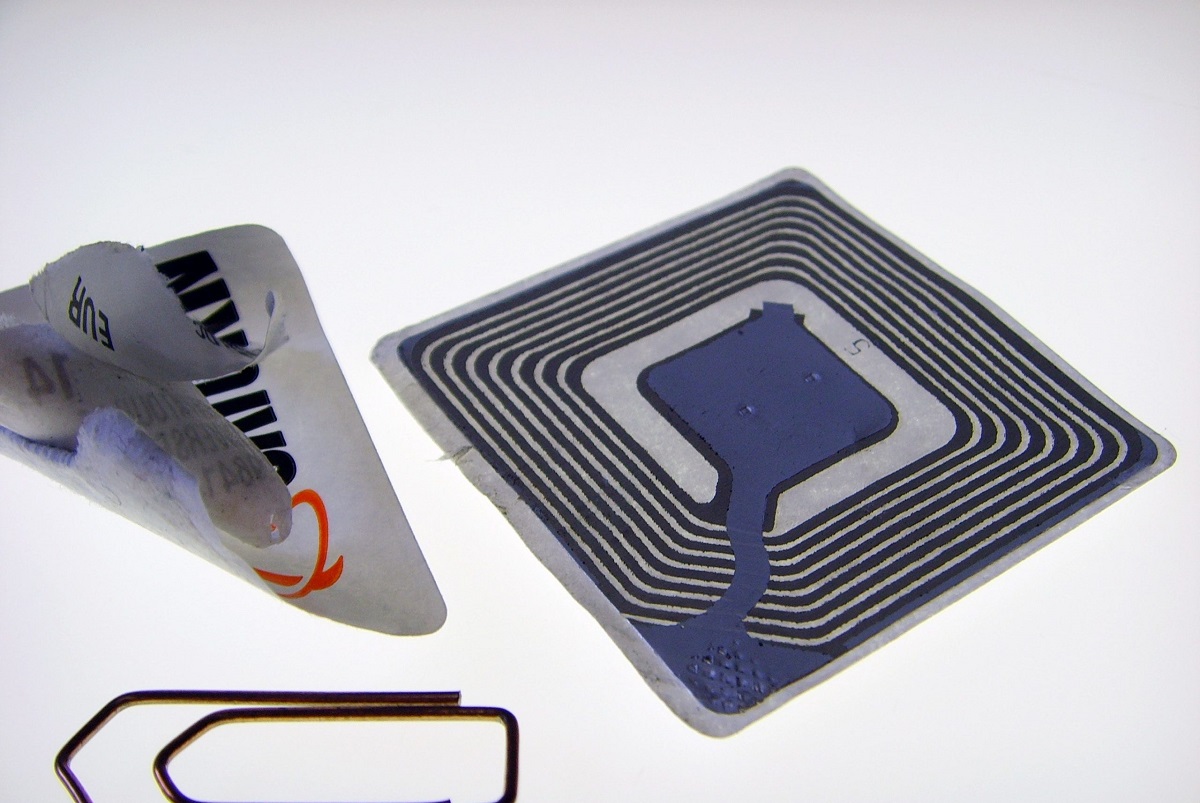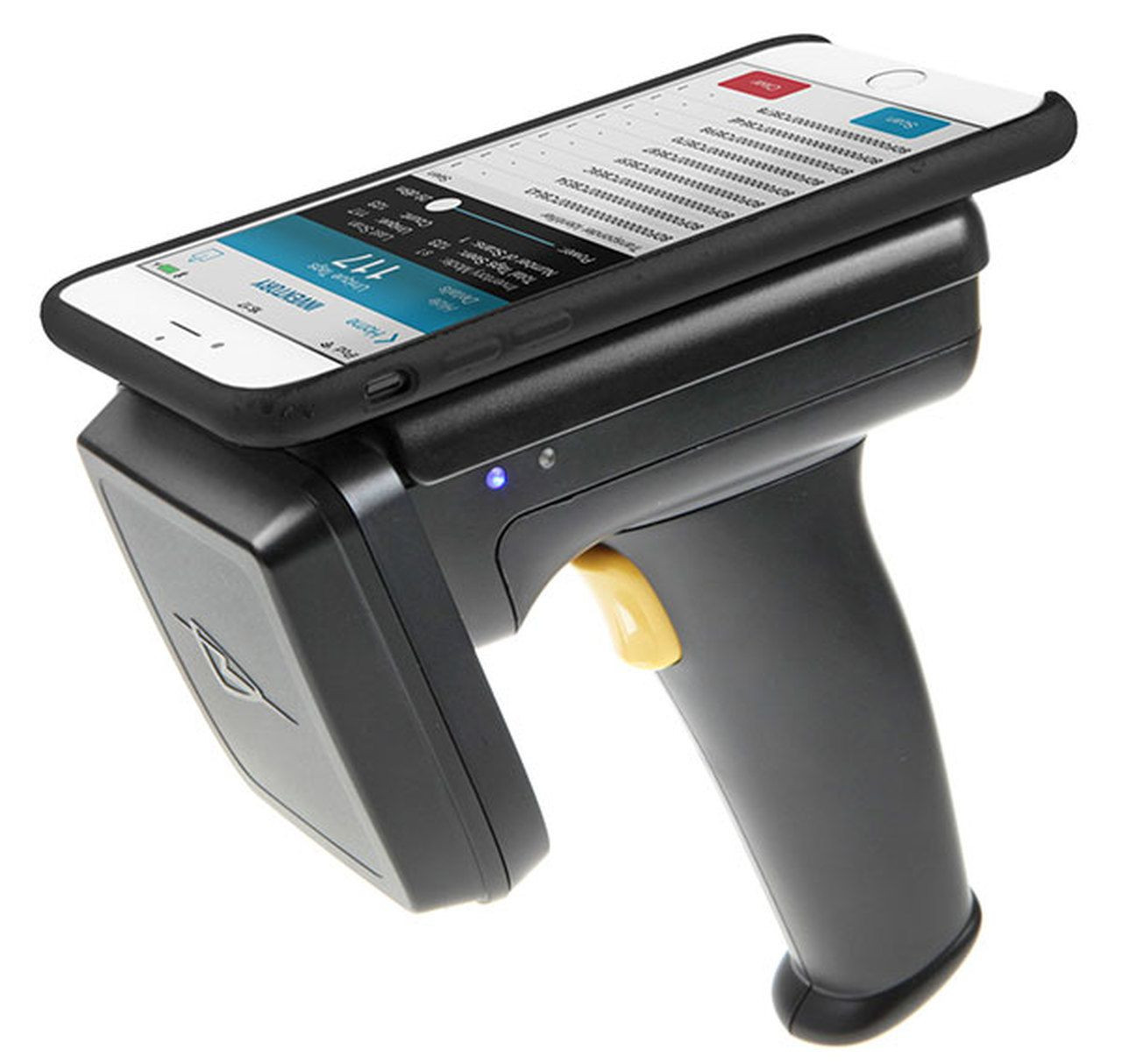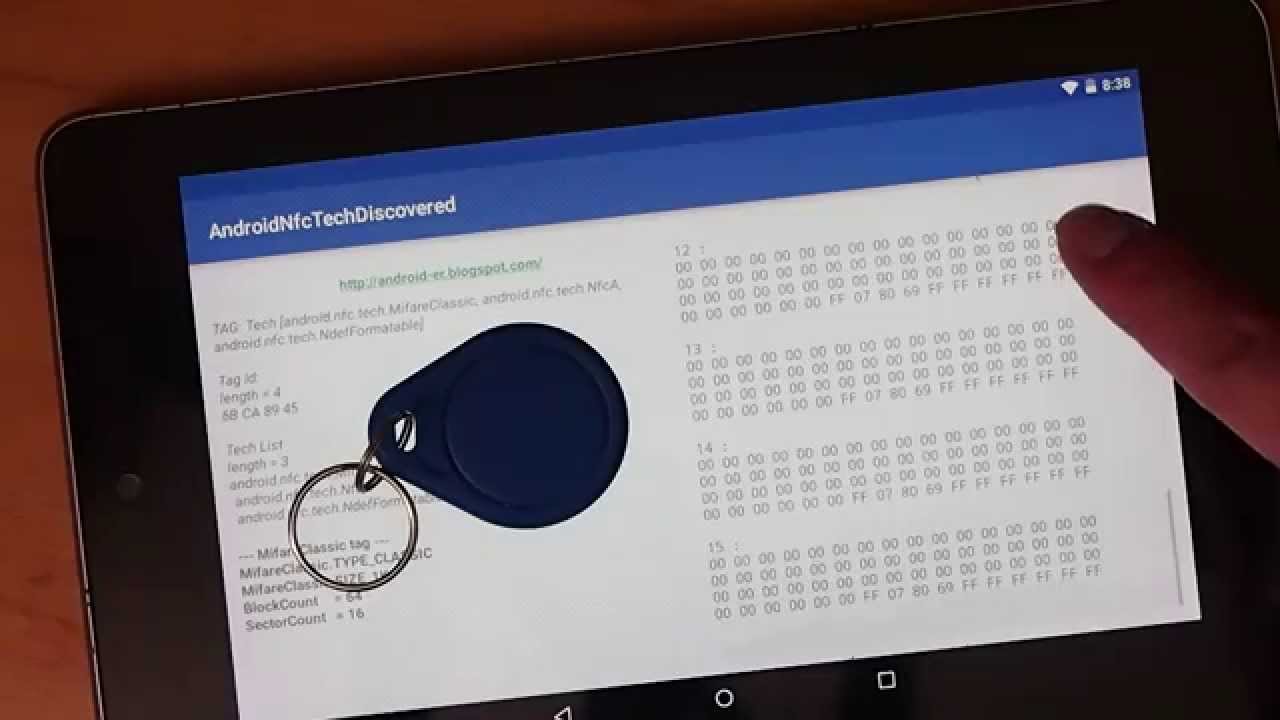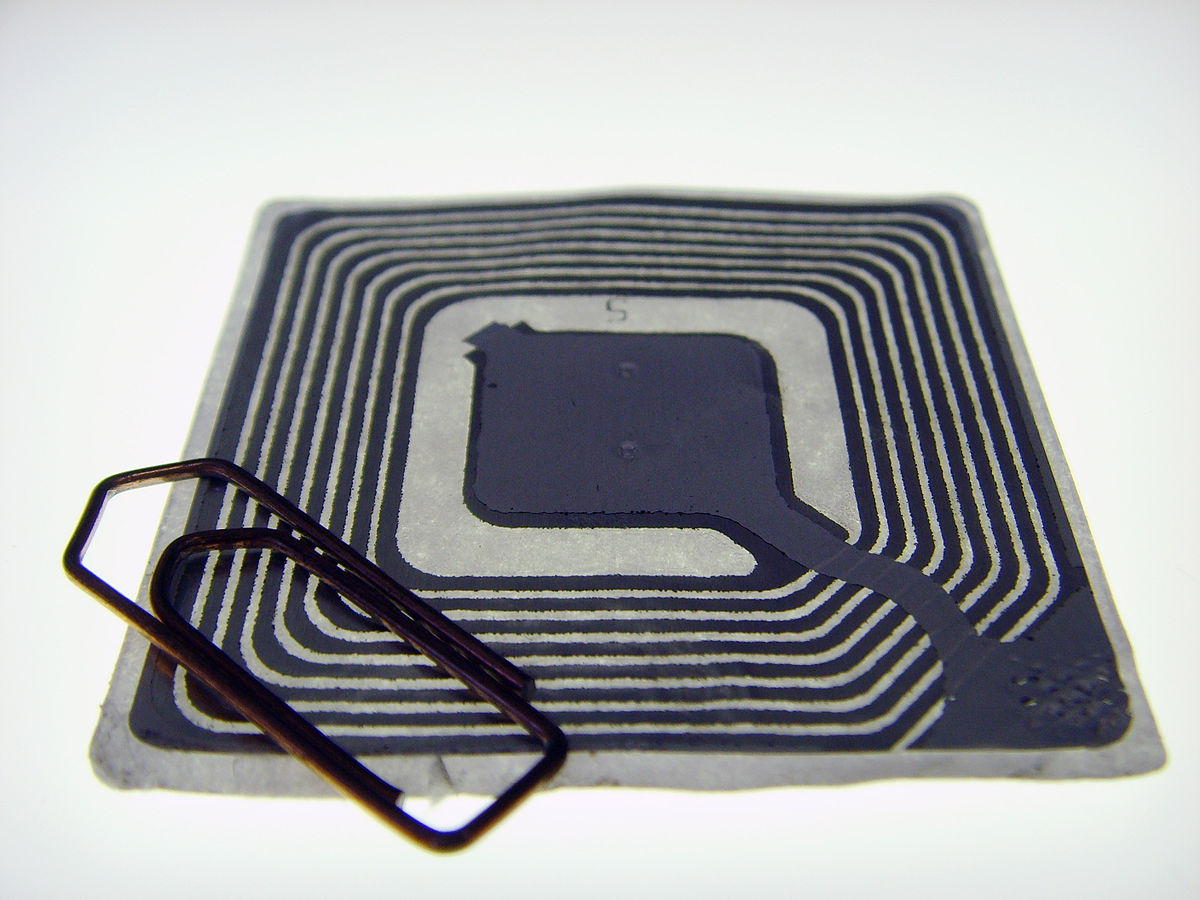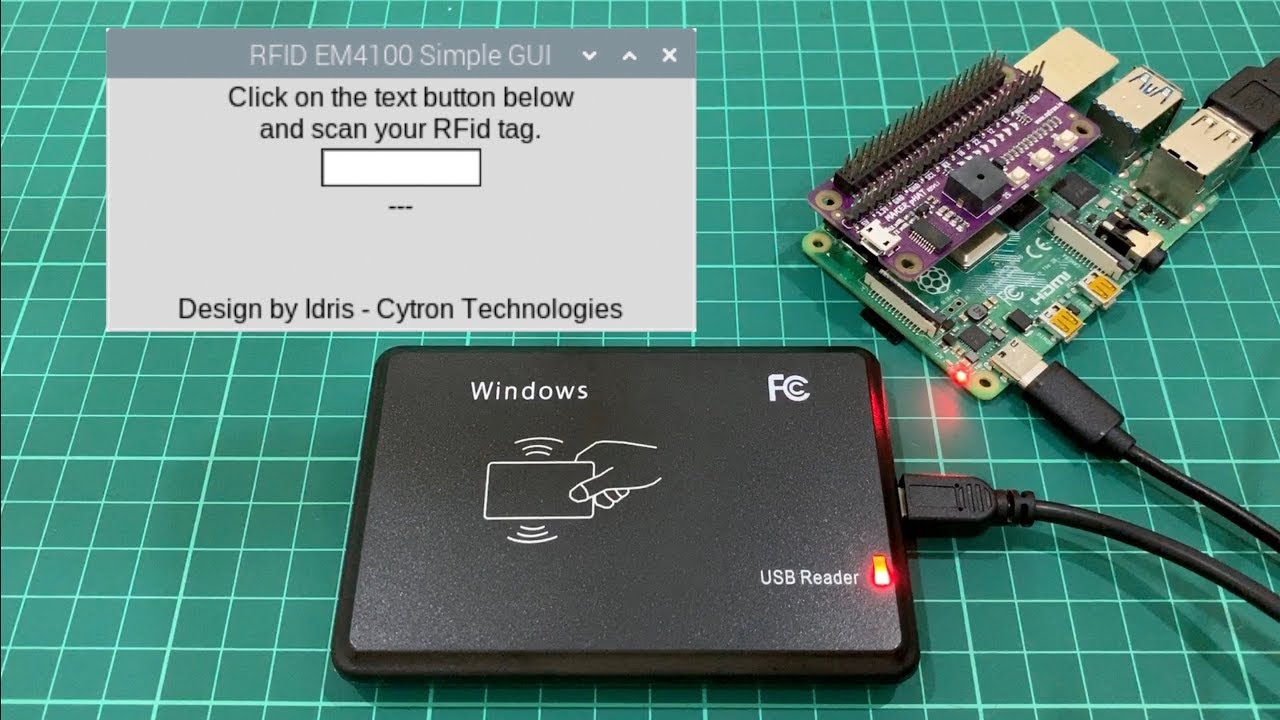Introduction
Welcome! In this article, we will delve into the fascinating world of RFID technology and explore how RFID tags are powered. RFID, which stands for Radio Frequency Identification, is a widely used technology that enables the identification and tracking of objects using radio waves. It has revolutionized various industries, including retail, logistics, and healthcare, by providing a convenient and efficient way to manage inventory and assets.
RFID tags, the heart of the RFID system, are small electronic devices that store and transmit information wirelessly. They come in different forms, including passive and active tags, each with its own method of powering. Understanding how these tags are powered is crucial to grasp the inner workings of RFID systems and their practical applications.
In this article, we will explore the concepts and mechanisms behind powering both passive and active RFID tags. We will also highlight the differences between these two types of tags and discuss their respective advantages and limitations. By the end, you will have a comprehensive understanding of RFID tag power sources and be better equipped to appreciate the role they play in enabling RFID technology.
What is RFID Technology?
RFID, which stands for Radio Frequency Identification, is a powerful technology that allows objects to be identified and tracked using radio waves. It consists of two main components: an RFID reader and RFID tags. The reader emits radio waves, which are received by the tags, allowing them to send back information stored on the tag.
Unlike traditional barcode systems, which require line-of-sight scanning, RFID offers the advantage of non-contact and simultaneous scanning of multiple tags. This makes it efficient and convenient for various applications, such as inventory management, supply chain tracking, access control, and even contactless payment systems.
RFID technology operates on different frequency bands, including low frequency (LF), high frequency (HF), and ultra-high frequency (UHF). Each frequency has its own advantages and is suitable for different use cases. LF is commonly used for animal tracking and access control, HF for contactless payment and identification cards, and UHF for inventory management and logistics.
RFID tags, also called transponders, are small electronic devices that contain a microchip and an antenna. These tags come in various forms, such as stickers, cards, or even embedded in products. They can store a range of information, including unique identification numbers, product details, or sensor data.
When an RFID tag comes into the range of an RFID reader, it receives radio waves from the reader, which provide the necessary energy to power the tag. The tag then uses this energy to power its microchip, allowing it to transmit its stored information back to the reader. This information can then be processed and utilized for various purposes, depending on the application.
In the next sections, we will explore the two main types of RFID tags—passive and active—and how each type is powered. Understanding the power sources behind these tags is crucial to fully comprehend the effectiveness and limitations of RFID technology in different scenarios.
Passive RFID Tags
Passive RFID tags are the most common type of RFID tags used in various industries. As the name suggests, these tags rely on external power sources to operate and do not have an internal power supply. Instead, they utilize the radio waves emitted by an RFID reader to power up and transmit data.
A passive RFID tag consists of an antenna and a microchip. The antenna is responsible for receiving the radio waves emitted by the RFID reader, while the microchip stores the information that the tag will transmit back to the reader. The absence of an internal power supply allows passive tags to be small, lightweight, and cost-effective.
When a passive RFID tag comes within the range of an RFID reader, the reader emits a radio frequency (RF) signal. This signal induces an electrical current in the antenna of the tag through a process called electromagnetic induction. The induced current then powers up the microchip in the tag, allowing it to transmit the stored information back to the reader.
It’s important to note that the power range of passive RFID tags is limited compared to active RFID tags. As the distance between the tag and reader increases, the signal strength weakens, which can impact the tag’s ability to power up and transmit data. This limitation means that the read range of passive RFID tags is shorter, typically up to a few meters.
Passive RFID tags are commonly used in applications where the tags are in close proximity to the reader, such as access control systems, ticketing systems, or item tracking within a limited area. They are favored for their simplicity, low cost, and small form factor, making them suitable for large-scale deployments.
In the next section, we will delve deeper into the process of how passive RFID tags work and the mechanisms behind powering them up using radio frequency signals emitted by RFID readers.
How Do Passive RFID Tags Work?
Passive RFID tags rely on the principle of electromagnetic induction to operate. When a passive tag comes within the range of an RFID reader, the reader emits a radio frequency (RF) signal. This RF signal generates an alternating magnetic field, which is picked up by the antenna of the passive tag.
When the tag’s antenna intercepts the alternating magnetic field, it induces an electrical current in the antenna through electromagnetic induction. This induced current provides the necessary power to activate the microchip in the tag. Once powered up, the microchip can perform various functions, such as storing and transmitting data back to the reader.
The microchip in a passive RFID tag consists of memory and a modulation circuit. The memory holds the information that is programmed onto the tag, such as a unique identifier or product details. The modulation circuit modifies the RF signal received by the antenna and encodes the data stored in the memory onto it.
When the microchip is powered up, it modulates the RF signal received from the reader. This modulation process alters certain characteristics of the signal, such as amplitude, frequency, or phase, to represent the stored data. The modulated signal is then sent back to the reader through the tag’s antenna.
The RFID reader detects the modulated signal from the tag and decodes the data embedded in it. The decoded information can be used for various purposes, such as inventory management, authentication, or tracking. This two-way communication between the reader and tag allows for quick and efficient data exchange without the need for physical contact.
One important consideration with passive RFID tags is the read range. The read range is the maximum distance between the tag and the reader that allows effective communication. Since passive tags rely on the power provided by the RF signal from the reader, the read range is determined by the strength of the RF signal and the sensitivity of the tag’s antenna.
In general, passive RFID tags have a shorter read range compared to active RFID tags, typically up to a few meters. This limitation makes them suitable for applications where close proximity between tags and readers is sufficient, such as inventory control within a specific area or access control systems.
Now that we understand how passive RFID tags work and how they are powered, let’s move on to the next section, where we will explore the power sources and operation of active RFID tags.
Powering a Passive RFID Tag
Passive RFID tags do not have an internal power source. Instead, they rely on the energy harvested from the radio frequency (RF) signals emitted by RFID readers to power their operation. The process of powering a passive RFID tag involves harnessing this RF energy and using it to activate the microchip in the tag.
When an RFID reader emits RF signals, they create an alternating magnetic field. The antenna of the passive tag intercepts this magnetic field, inducing an electrical current through the principle of electromagnetic induction. This induced current serves as the power supply for the tag’s microchip.
The microchip in the passive RFID tag uses a rectifier circuit to convert the alternating current (AC) induced in the antenna into direct current (DC). The rectifier circuit consists of a diode that allows the current to flow in only one direction. By converting AC to DC, the microchip ensures a stable power supply for its operation.
However, it’s important to note that the power available from the RF signal is limited. The distance between the tag and the reader affects the strength of the RF signal received by the tag. As the distance increases, the power decreases, potentially affecting the tag’s ability to operate reliably. Therefore, the read range of passive RFID tags is typically shorter than that of active RFID tags.
Passive tags are designed to be energy-efficient, allowing them to operate with minimal power. They utilize techniques like backscatter modulation to minimize power consumption. Backscatter modulation involves reflecting a portion of the RF signal back to the reader, altering the signal’s characteristics to encode data. This allows the tags to transmit information back to the reader while consuming less power compared to continuous transmission methods.
In addition to RF energy harvesting, passive RFID tags can also utilize battery-assisted passive (BAP) technology. BAP tags incorporate a small battery that provides supplementary power when the RF energy is insufficient. The battery assists in powering the microchip, thereby extending the read range and improving reliability, especially in challenging environments.
Overall, passive RFID tags are power-efficient devices that rely on the RF energy emitted by RFID readers to power their operation. Through the process of electromagnetic induction and rectification, these tags can efficiently convert the RF energy into a stable power supply for their microchips. This power-harvesting mechanism, combined with efficient modulation techniques, allows passive RFID tags to be widely used in various applications where cost-effective and scalable identification and tracking solutions are required.
With our understanding of powering passive RFID tags established, let’s move on to explore the next type of RFID tags — active RFID tags — and how they differ in their power requirements and operation.
Active RFID Tags
Active RFID tags differ from passive RFID tags in that they have their own internal power source, typically a battery. Unlike passive tags that rely on external RF energy for power, active tags are self-powered and can transmit signals over longer distances.
An active RFID tag consists of a microchip, an antenna, and a battery. The microchip stores and processes the information to be transmitted, while the antenna is used to send and receive radio frequency (RF) signals. The battery provides the necessary power to the microchip and antenna, allowing the tag to operate independently from an external power source.
One of the main advantages of active RFID tags is their extended read range. With their own power source, active tags can transmit signals over greater distances, making them suitable for tracking items that need to be located over larger areas. The read range is typically measured in hundreds of meters or even kilometers, depending on the specifications of the tag and the environment.
Active RFID tags can operate in different modes, such as continuously transmitting their identification information or responding to specific queries from an RFID reader. They can also incorporate additional features, such as sensors for temperature monitoring or motion detection, providing real-time data for various applications.
The battery in an active RFID tag plays a crucial role in powering the tag”s operations. It provides the necessary electrical energy to the microchip, allowing it to perform tasks such as data processing, modulation, and transmission. The battery life can vary depending on the power requirements of the tag and the frequency of transmission.
It’s important to note that the use of a battery means that active tags have a limited operational lifespan compared to passive tags. The battery will eventually run out of power and need to be replaced or recharged. However, advancements in battery technology have led to longer-lasting and rechargeable batteries, extending the lifespan of active RFID tags and making them more practical for long-term deployments.
Active RFID tags are commonly used in applications that require real-time tracking or monitoring, such as asset management, vehicle tracking, and personnel tracking. Their extended read range, enhanced functionality, and ability to operate independently of external RF energy make them ideal for use cases where passive tags might not be suitable.
Now that we have explored how active RFID tags are powered and the advantages they offer, let’s compare passive and active RFID tags in the next section to understand which type may be more appropriate for specific applications.
How Do Active RFID Tags Work?
Active RFID tags are powered by their internal battery, which sets them apart from passive RFID tags. The battery supplies the required energy to the microchip and antenna of the active tag, enabling it to operate independently and transmit signals over longer distances.
An active RFID tag consists of a microchip, an antenna, and a battery. The microchip stores the information to be transmitted, such as unique identifiers or sensor data. The antenna is responsible for sending and receiving radio frequency (RF) signals. The battery, as the power source, provides the necessary electrical energy for the tag’s operation.
When an active RFID tag is powered on, the microchip starts processing the stored information. The tag continuously emits RF signals using its antenna, making it actively transmit signals without the need for external RF energy. These signals can contain identification data, sensor readings, or other relevant information.
Active tags can operate in different modes, depending on the specific application. They may transmit signals periodically at pre-defined intervals or in response to specific events or triggers. In some cases, the tags can be programmed to respond to queries from an RFID reader, providing identification information or sensor data upon request.
One of the key advantages of active RFID tags is their extended read range. Depending on the specifications of the tag and the environment, active tags can transmit signals over hundreds of meters, or even several kilometers. This makes them suitable for applications that require tracking or monitoring over large areas.
The battery in an active RFID tag enables it to function independently for an extended period. The battery life can vary depending on factors like the power requirements of the tag, transmission frequency, and the usage patterns. In some cases, rechargeable batteries can be used, allowing the tags to be reused and reducing the need for frequent battery replacements.
The usage of battery-powered active RFID tags comes with the consideration of managing and monitoring the battery life. Organizations need to implement strategies to keep track of battery levels and plan for replacements or recharging when necessary to ensure uninterrupted functionality.
Active RFID tags find applications in various industries, including asset management, logistics, and supply chain. They are well-suited for scenarios that require real-time tracking, continuous monitoring, or the ability to transmit data over longer distances. The extended read range and independence from external RF energy make active RFID tags an efficient and reliable solution for such applications.
As we conclude our exploration of how active RFID tags work, we will now move on to compare passive and active RFID tags to understand their respective strengths and weaknesses.
Powering an Active RFID Tag
Active RFID tags are self-powered devices that utilize an internal battery as their power source. The battery provides the necessary electrical energy for the tag to function independently and transmit signals over longer distances compared to passive RFID tags.
The internal battery in an active RFID tag plays a vital role in powering its operations. It supplies the required energy to the microchip and antenna, enabling the tag to perform various functions such as data storage, processing, and transmission.
The battery capacity of an active RFID tag is determined by factors like the power consumption of the tag’s components, the desired operational lifespan, and the frequency and duration of signal transmission. Different battery types, such as lithium-ion or alkaline batteries, can be used based on the specific requirements of the application.
The battery life of an active RFID tag depends on several factors, including the power consumption of the tag and the frequency of signal transmission. To optimize battery life, active tags often incorporate power management techniques. These techniques may involve adjusting transmission power levels, using sleep mode when the tag is not in use, or employing algorithms to conserve power during periods of low activity.
To ensure uninterrupted functionality, organizations using active RFID tags must have measures in place to monitor and manage battery life. This involves implementing systems to track battery levels, setting up alerts for low battery levels, and establishing protocols for battery replacement or recharging when necessary.
In some cases, active RFID tags may also support rechargeable batteries. Rechargeable tags offer the advantage of reusing the battery, reducing the need for frequent replacements. The recharging process can be accomplished through various methods, such as direct charging or using wireless charging technologies.
The power autonomy provided by the internal battery of active RFID tags allows them to operate independently for an extended period. This independence from external power sources makes active tags suitable for applications that require continuous or real-time tracking, long-range communication, and the ability to store and transmit complex data.
Active RFID tags are commonly used in industries such as asset management, logistics, and security. Their self-powered nature and extended read range enable them to perform in challenging environments and offer greater flexibility in various use cases. With advancements in battery technology, the lifespan and efficiency of active RFID tags continue to improve, making them a reliable and efficient solution for many applications.
Having explored how active RFID tags are powered, we can now move on to the concluding section, where we will compare passive and active RFID tags to better understand their strengths and applications.
Comparison between Passive and Active RFID Tags
Passive and active RFID tags are two distinct types of tags used in RFID technology, each with its own advantages and limitations. Let’s compare these two types to understand their differences and determine which is more suitable for specific applications.
- Power Source: Passive tags rely on external RF energy from an RFID reader to power their operation, while active tags have their own internal power source, typically a battery.
- Read Range: Passive tags typically have a shorter read range, usually up to a few meters, whereas active tags can transmit signals over longer distances, ranging from hundreds of meters to several kilometers.
- Cost: Passive tags are generally more cost-effective compared to active tags due to their simpler design and lack of an internal power source.
- Lifespan: Active tags have a limited operational lifespan due to the finite capacity of their internal battery. Passive tags, on the other hand, can function indefinitely as long as they receive RF energy from an RFID reader.
- Functionality: Active tags can incorporate additional features, such as sensors, real-time clock, or onboard memory, allowing them to provide more advanced functionalities compared to passive tags.
- Application: Passive tags are commonly used in applications that require close range identification and tracking, such as access control, inventory management, and item tracking within a limited area. Active tags are suited for applications that require longer-range tracking, real-time monitoring, and continuous data transmission, such as asset management, logistics, and vehicle tracking.
In summary, passive RFID tags are cost-effective, lightweight, and suitable for short-range applications, while active RFID tags offer extended range, advanced functionalities, and independent operation with the trade-off of higher cost and limited lifespan. The choice between passive and active RFID tags depends on the specific requirements of the application and the desired read range, functionality, and budget considerations.
Conclusion
In conclusion, RFID technology has revolutionized various industries by providing a convenient and efficient way to identify and track objects using radio waves. RFID tags, the core components of RFID systems, come in two main types: passive and active tags.
Passive RFID tags rely on external RF energy emitted by RFID readers to power their operation. These tags are cost-effective, lightweight, and suitable for short-range applications. They are commonly used in access control, inventory management, and item tracking within a limited area.
Active RFID tags, on the other hand, have their own internal power source, typically a battery. This allows them to transmit signals over longer distances, making them ideal for applications that require extended range, real-time monitoring, and continuous data transmission. Active tags offer additional features and advanced functionalities but come with higher costs and limited operational lifespan.
Understanding how RFID tags are powered is crucial to fully comprehend their capabilities, limitations, and suitability for various applications. Passive tags harvest RF energy for power, while active tags rely on their internal battery. Both types have their strengths and are suited for specific use cases.
As technology progresses, both passive and active RFID tags continue to evolve, with advancements in power efficiency and battery life. This ensures improved performance and increased reliability in a wide range of applications.
Whether it’s managing inventory, tracking assets, providing access control, or streamlining logistics, RFID technology has revolutionized the way we track and identify objects. By leveraging the power of RFID tags, businesses can enhance efficiency, reduce costs, and improve overall operations.
As the potential applications of RFID technology continue to expand, it’s important to stay updated on the latest advancements, best practices, and industry standards to harness the full benefits of this powerful technology in diverse sectors.







